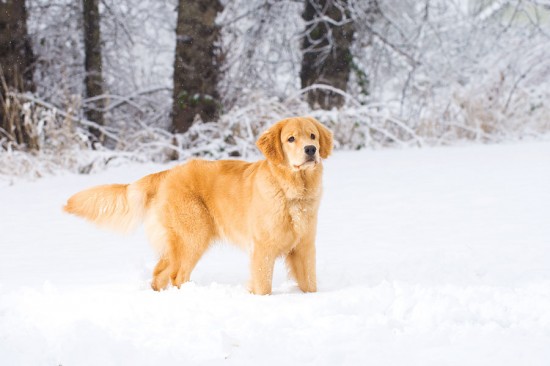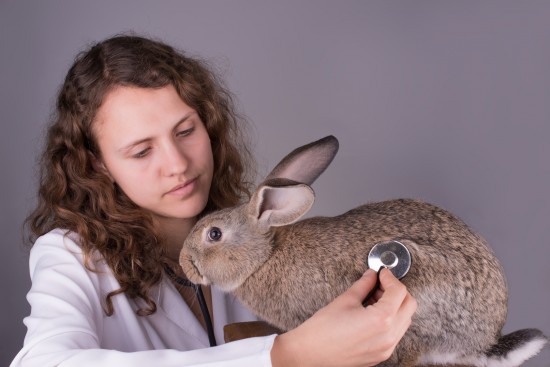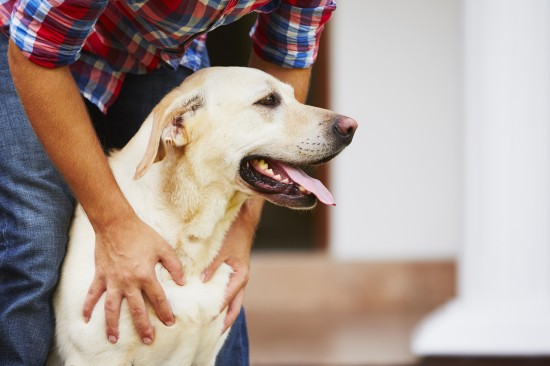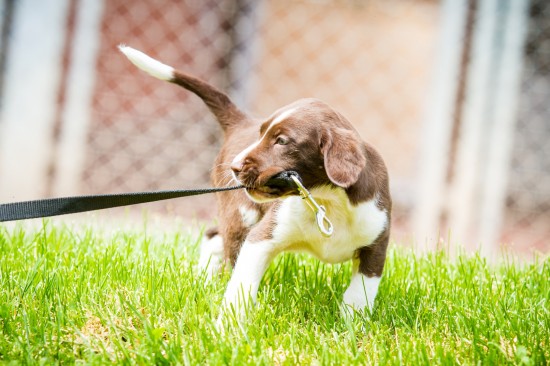DogBarkings.com
AKA Doxie (US), Dackel or Teckel (GER, FR), wiener dog/hotdog (US), sausage dog (UK/AUS/NZ), Teckel (NL), Worshond ,Winnie Dog (US) (S.A.), Jamnik (PL), Tax (SWE)
DESCRIPTION
The Dachshund, or 碨ausage Dog,?as it is also known, comes in three sizes, all displaying the characteristic short legs and elongated body of the breed.?The American Kennel Club recognises two of the types, the standard sized Dachshund and the miniature, whilst European Kennel Club磗 also recognise a smaller Toy variety of the breed.?Each type of Dachshund comes in three different coat types: A rough-coated version, a short-coated and a wiry-coated.?The smooth-coated Dachshund is the most popular of the coat types, with a short, smooth and shiny coat, whilst the long-coated variety has a sleek, often slightly wavy, glistening coat.?The wired haired Dachshund has a rough, thick, textured outer coat that covers the whole body, excluding the ears, eyes and jaw and has a softer short-haired undercoat.?The body of the Dachshund, although small, is muscular and they carry themselves with a proud, intelligent expression.?They have an elongated head, finishing in a long muzzle, that tapers evenly to the nose, with a scissor or pincer bite and extremely tough canine teeth, numbering 42 in total.?Dachshunds have brown-black or dark red eyes, which are oval in shape and emanate an intelligent and lively expression, helped further by the prominent bridge over the eyes.?The ears of this breed hang to the cheeks, but are not lacking in mobility, whilst the tail is carried in line with the body.?Dachshunds can come in a wide number of colors including: black, red, chocolate, isabella (tan or fawn), creme (blond with no trace of red, from golden blond to platinum) and blue.?The also come in a number of bi-colors, such as: black and tan, black and creme, chocolate and tan, chocolate and creme, blue and tan, or blue and creme. In these combinations, the former color is the base color, and the tan or creme appears on the face and points. Sable is a red base coat with a black overlay. In the wire-haired variety, there is also wild boar, unique in that the hair shaft itself is bi-colored red and black.?Even more colorings exist as tri-colors or patterns: brindle, where stripes cover the entire body and can be seen on any of the previously mentioned colors; Dapple, where lighter patched of color appear on a darker background; piebald, can be either bi or tri-colored and exist where the Dachshund has a white body with patches of one or two solid colors.?the Dachshund is completed by a strong breastbone and a tucked-in abdomen. Dachshunds move with a smooth and effortless gait.
TEMPERAMENT
A mischievous dog, the Dachshund is a proud, energetic and brave breed (sometimes to the point of recklessness).?They have an intelligent and bold disposition, although at times have been described as 磍ittle clowns.礌 Loyal and affectionate to their owners, the Dachshund is also a very vocal dog and has a surprisingly loud bark for a dog of its size.?It can become jealous of other pets, or dogs and will display this jealousy through lack of co-operation or even snapping in extreme cases.?They are relatively easy to train, although often the owner may feel the balance of power shifting, as the dog treats everything as a big adventure and game.?However, providing the handler knows how to properly communicate an 碼lpha dog磗tance to the breed, then there shouldn磘 be too many difficulties.?Some Dachshund can be difficult to housebreak and patience and consistency is required.?There is a belief that the longer-haired variety may be somewhat mellower than their short-haired counterparts.
HEIGHT
STANDARD: 35-40cm (14-16 inches)
MINIATURE: 35cm (14 inches)
TOY: 30cm (12 inches)
WEIGHT
STANDARD: 5kg (12lbs)
MINIATURE: 4.9kg (11lbs)
TOY: 3.5kg (8lbs)
HEALTH
Dachshunds suffer from inter-vertebral disk disease (IVDD), due in part to an extremely long spinal column and short rib cage. The risk of injury can be worsened by obesity, which places greater strain on the vertebrae, therefore the Dachshund diet should be watched to ensure no overfeeding and weight gain takes place.?The breed is also prone to patella luxation whilst more rare issues include: epilepsy, granulomatous meningoencephalitis, dental issues, Cushings disease, thyroid problems, various allergies and atopies, and various eye conditions (cataracts, glaucoma, progressive retinal atrophy, corneal ulcers, non-ucerative corneal disease, sudden acquired retinal degeneration and cherry eye).?Having listed these however, many can be avoided by sourcing a Dachshund from a reputable and experienced breeder, who is aware of issues in the breed and takes care to make sure of a low incidence in their stock.
LIVING CONDITIONS
Due to their small size Dachshunds will do fine in apartments and although mischievous and fairly active indoors, they do not require vast spaces to move around.?However it is still important that they receive quality time outside of the home.
LIFE EXPECTANCY: 12-15 years
LITTER: 4-6 puppies
GROOMING
SHORT-HAIRED:?Require the least amount of care, consisting of a regular rub down with a damp cloth and trimming of nails when necessary.?Inspection and cleaning of ears should also take place from time to time.
LONG-HAIRED:?Daily brushing should take place with a slicker brush and any matts should be combed out with a metal comb, taking care not to hurt the dog.?Like the short-haired variety clipping of nails and cleaning of ears should take place from time to time.
WIRE-HAIRED: A hard bristle brush should be used daily to brush this Dachshund variety, especially when they are shedding profusely.?Beard and eyebrows should be trimmed once a month with blunt-nosed scissors.
All types should be bathed every two months and can have their eyes cleaned with a vet approved solution.?Regular oral exams are also required for this breed.
HISTORY
The first accounts of Dachshunds come from paintings and historical accounts made around the 15th Century, depicting dogs with elongated bodies and short legs being used to hunt for badgers.?This connection today磗 Dachshund is even more convincing when we consider that the German word for badger, is in fact 碊achs.礌 It was their tenacious, terrier like spirit coupled with their hound like scenting abilities that probably made this dog such a popular choice for this particular form of hunting.?As the breed progressed through the ages, it began to be more commonly referred to as the Dachshund (although this covered only the smooth and long-coated types, with the wire-haired version not being recognised until the 19th Century) and a ban on breeding between different types was implemented.?The dog磗 size determined its quarry with the larger types hunting badgers and sometimes boars, whilst the smaller types hunted rabbit and foxes.?The American Kennel Club has records of Dachshunds being imported to the USA in 1885 and it was in this year that it was recognised by the AKC, although mistakenly the breed was classified as a hound breed due to a mistranslation of the German 磆und?part of the name.?Hund actually means just 磀og?in German and not hound, hence 碽adger dog.礌 Today the dog is one of the most popular dogs in the United States and worldwide.牋牋牋牋牋

 Caring For Your Dog During The Winter
Caring For Your D
Caring For Your Dog During The Winter
Caring For Your D
 Choosing the Best Litter Box Furniture for Home Pet Cats
Choosing the Best Litter Box Furniture for Home Pet Cats
Choosing the Best Litter Box Furniture for Home Pet Cats
Choosing the Best Litter Box Furniture for Home Pet Cats
 Viral Haemorrhagic Disease (vhd) In Rabbits
Viral Haemorrhagi
Viral Haemorrhagic Disease (vhd) In Rabbits
Viral Haemorrhagi
 Do Owners Influence A Dogs Behaviour?
Do Owners Influen
Do Owners Influence A Dogs Behaviour?
Do Owners Influen
 Training Tips - Walking Your Puppy On The Lead
Training Tips - W
Training Tips - Walking Your Puppy On The Lead
Training Tips - W